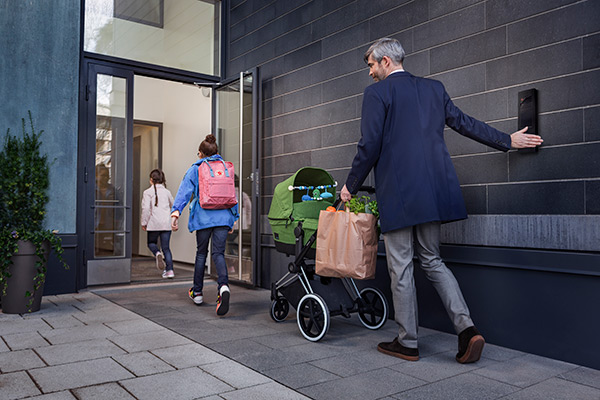

nordicum » enertec » HR viesti » kita » prointerior » prometalli » proresto » seatec »
Wanted: Flow-HowKONE turned to its customers to create the next wave of People Flow solutions for smart buildings
Urbanization and digitalization are two trends which drive the real estate industry. The need to create improved buildings and betterfunctioning cities means exploring new technologies and services. With around 200 000 people moving into cities across the globe every day – what kind of business opportunities does this present?
“Developers and building owners are under tremendous pressure to deliver living and working environments that meet increasing expectations of residents and tenants alike,” says Teppo Voutilainen, Head of New Services and Solutions at KONE. According to Voutilainen, failure to keep up with the rapid pace of change has significant implications for industry stakeholders, in terms of competitiveness and bottom line. In his opinion, a winning approach means starting from a service design perspective, putting people first and creating a deeper understanding of their needs. With this in mind, KONE Residential Flow was created and launched in 2017. “From the beginning, we defined and prioritized solution concepts and we conducted several workshops in different countries, met with potential partners, and studied our customers’ decision-making processes,” Voutilainen explains. Listen & Learn When developing KONE Residential Flow, more than 200 developers, facility managers, and building residents around the world were interviewed by the KONE team, in order to understand their challenges and needs related to people flow in residential environments. “For example, we learned that many people face challenges with simple tasks like opening the front door when carrying groceries or receiving deliveries; we also learned that many people had missed out on deliveries completely because they were not at home to receive them.” Capitalizing on all these little discoveries means that KONE Residential Flow can, indeed, take the stress out of everyday situations, making home life easier and more convenient. “The solution is available for both new and existing buildings,” adds Voutilainen. Perfecting People Flow “Good people flow happens when people can move smoothly, safely, comfortably, and without waiting,” Voutilainen sums up. The people flow experience of a building begins at the point of arrival. From there, the journey continues through the lobby and then to the final destination through multiple doors, spaces, halls and corridors. “For building users, there is a strong connection between the quality of people flow and the overall quality of the building,” remarks Voutilainen.
Streamlining Business “The service is aimed at customers who, for instance, have people flow challenges to solve – such as vertical or horizontal flows, bottlenecks or guidance issues – or they are perhaps dealing with changes in building usage or business conditions,” Voutilainen says. Depending on the project in question, customers benefit from a variety of improvements, such as reduced waiting and journey times, better utilization of valuable floor space, and improved planning and budgeting. Stay Flexible
“Flexible solutions for things like info screens, access control, and elevator traffic control that can adapt to changes in building dynamics, will go a long way to solving these issues,” Voutilainen believes. “Property developers can reap the rewards of technology that can be adapted to the changing needs of the building and its tenants while also helping their building stand out from the crowd as an attractive prospect for potential new tenants.” Evolution of the Office At the same time, the increased use of video conferencing and the need for quiet working spaces has increased the demand for meeting room space as well as “quiet room” spaces. Furthermore, the shift in focus towards employee well-being and developing communication technologies has increased the demand for new innovative ways to improve and enhance the workplace. However, strict definitions of various real estate may soon be a thing of the past, as the lines between living, working, and entertaining become increasingly blurred. What this means is that concepts such as the activity- based office and user-centric design are transforming our environments. “People are more demanding and technologically aware and they expect far more from the spaces where they live and work. For example, in the residential sector, people expect their building to provide integrated solutions that make their everyday lives easier. Building owners that do not anticipate these demands will see their bottom line take a big hit,” argues Voutilainen. Engage & Excel “This involves engaging partners, customers and users to co-create the solutions together,” Voutilainen explains. A big part of the team’s work is turning challenges into opportunities. Voutilainen notes that when you’re seeking to address the current and future needs of developers and building owners in the residential and office sectors, it is “critically important” to take a measured, iterative approach when bringing new solutions to the market. There is no place for blanket assumptions here. “Jumping to conclusions or simply assuming you know what the market wants will almost certainly be doomed to failure, with solutions that neither address the real needs of customers and tenants, nor add value to your offering.” Photos: KONE How did you like the article?    
|
LATEST ARTICLESNEWS |

